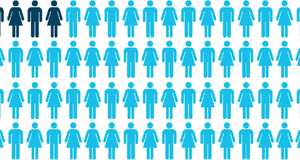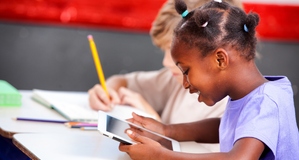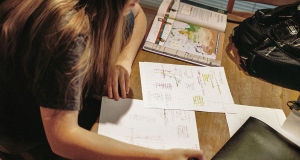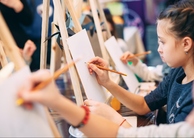Featured Article:The Implementation of Social Software in Authentic Literacy Activities
By
2014, Vol. 6 No. 11 | pg. 1/4 | »
IN THIS ARTICLE
KEYWORDS
AbstractWhile international literacy results show Canada maintaining a strong standing, there have been declines in the results for both traditional and digital literacy in several provinces, including New Brunswick. A trial of authentic literacy activities across a range of subject areas in the high school curriculum has been implemented in New Brunswick. Implementing social software in authentic literacy activities is discussed with an exploration of recent research that involved the implementation of technologies, primarily social software, in literacy teaching environments. How traditional literacy and digital or multimodal literacies are supported and developed in these environments is investigated. Finally, suggestions on the best ways to implement social software with literacy approaches are offered. The development of literacy skills is one of the most basic goals of educational institutions. This is for good reason, since literacy skills are mainly obtained in formal schooling environments (OECD, 2000). However, just because students attend school does not guarantee they learn and develop the literacy skills needed to function effectively in society (Parke, 1970). Meanwhile, there has been an increased call for educational systems to engage students in activities that promote multimodal or digital literacy skills (Walsh, 2010). This call is echoed as well in international studies, such as from the Organisation for Economic Co-Operation and Development (OECD) and the Programme for the International Assessment of Adult Competencies (PIAAC), which urge countries to ensure their citizens acquire the necessary abilities and skills to be successful in the 21st century work environment (OECD, 2000; PIAAC, 2013).While Canada’s overall performance in these studies was strong, concerns were raised that Canada “shows a large proportion of its population (ages 16-65) at both highest and lowest levels of literacy” (PIAAC, 2013). Similarly, Canada’s overall performance in the 2012 Programme for International Student Assessment (PISA) was strong. However, in “print reading” the province of New Brunswick has the second lowest score in Canada, and in “digital reading” the province was the third lowest (PISA, 2012). The PISA report also warned of “a trend in decreasing average scores” and “several provinces have experienced a significant decline in skill levels of their youth over the past decade” (PISA, 2012, p. 48). Citing the PIAAC study, the PISA report also stated that “many Canadians...face significant challenges in terms of literacy, numeracy, and problem-solving in a technology-rich environment” (p. 48). The report described the PISA 2012 results as “a strong signal” for educational stakeholders in Canada “to work together in validating current education policies, learning outcomes, and teaching approaches and strategies, as well as allocating resources to ensure that they continue meeting the needs of our society” (p. 48). “It is essential,” the report urged, “that our education systems prepare Canadian youth for full participation in modern society for generations to come” (p. 48). Given New Brunswick’s performance in the recent PISA study and the report’s suggestions, it is not surprising the New Brunswick Anglophone North School District formed a high school cross curricular literacy committee to discuss literacy teaching approaches in high school courses and began a trial, in different subject areas, of a literacy model based on what is termed “authentic” literacy. The word “authentic” is loaded with various connotations. However, in terms of literacy, the term authentic applies to text that has practical functions and communicative purposes outside of a learning environment (Duke, Purcell-Gates, Hall, & Tower, 2006). Essentially, authentic literacy activities “mean reading and writing that is unlike the kind done in school” (Duke et al., 2006, p. 344). VanDeWeghe (2008) described writing as fulfilling four functions in authentic literacy activities: writing to learn, to disclose learning, to express opinions, and to connect. These functions reinforce the operational definition of authentic literacy proposed by Duke et al. (2006), which includes the statement, “each authentic literacy activity has a writer and a reader - a writer who is writing to a real reader and a reader who is reading what the writer wrote” (p. 346). The establishment of authentic literacy activities in a classroom, for any subject area, can conceivably be achieved with only print-based materials and no implementation of technologies. However, if educators are to seriously consider how they can support the promotion of traditional literacies in their classrooms, they also have to consider and address how to promote and help their students develop multimodal or digital literacies. As previously mentioned, from several current literacy studies, there is mounting evidence that these literacies should be taught in schools, and some research has illustrated that they can be taught side by side with traditional or print-based materials (Cloonan, 2010). Authentic literacy activities are being explored in the Anglophone North School District in New Brunswick. This exploration of authentic literacy across a broad range of high school subjects is addressing the 2012 PISA report’s call for education departments in Canada to consider literacy teaching approaches and strategies.
Photo: Pedro Ribeiro Simões CC-2 Thus, authentic literacy activities require both a communicative purpose and a genuine audience. Perhaps, the use of technology, particularly social software, can help meet these two requirements, while also offering students the opportunity to not only exercise and build traditional literacy skills, but also skills and abilities that experts claim are essential to effectively function and contribute in a 21st century society. This paper therefore addresses the following question: What impact does technology, particularly social software, have on the promotion of literacy skills - both traditional and multimodal – for students engaged in authentic literacy activities? RationaleWeb 2.0 and social media technologies, also broadly referred to as social software, have been widely accepted and used by many educators over the past ten years, particularly educators who use constructivist teaching methods (Spires, Lee & Turner, 2008). According to Minocha (2009) one key aspect of any social software tool is “that it involves wider participation in the creation of information which is shared” (p. 382). Several online software corporations and smaller companies have responded with an abundant array of online products that they claim help engage students in learning and develop what have been dubbed “21st-Century Skills.” As stated by Furr, Ragsdale and Horton (2005), “educational technology has become big business” (p. 278). These claims, combined with the fact that many of the products are available for free or at very low cost to schools, have made them attractive choices for teachers. The argument has been made that these technologies even have a transformative nature on learning and literacy (Warschauer, 2006). Yet, there are others who assert that caution must be heeded on how technology is implemented in the learning environment, and educators can fall into the trap of using technology as the goal rather than the means to learning outcomes (Furr et al., 2005). Hence, technology, including social software, should only be implemented in a learning environment when the tools are “well grounded within the pedagogical activities of courses” (Minocha, 2009, p. 382). The pressure to implement technology in the classroom has grown even greater as students possess the power of mobile computing and have become increasingly engaged in online communities and social media. With the technology in their own hands, today’s youth are online even when they are sitting in a classroom (White & Hungerford-Kresser, 2014). Most educators, even those who have refused to implement technology in their classrooms, have to concede that the technology is most likely here to stay, regardless of whether or not it has been formally implemented. Experts argue that these new technologies are changing how we consume information, and schools need to teach new media literacy skills so students are well prepared in a 21st century world (Hedberg & Brudvik, 2008; Leu, 2000). Edelsky (1986, as cited in Barnitz, 1994) asserted that an authentic literacy activity must allow learners the opportunity to “construct meaning through transactions with natural texts” (p. 588). Walsh (2010) noted the challenge today is for students to have the opportunity in literacy programs for transactions with digital technologies without reducing the importance of traditional literacy practices that include print-based materials. The eventual implementation of these technologies in learning environments may be inevitable. It is crucial to determine what are the best approaches when utilizing and implementing these tools in ways that enhance the development of literacy skills. Particularly, when it comes to how social software has been implemented in learning environments to address the teaching of literacy skills, and whether these approaches are transferable to other learning environments. Additionally, do these approaches support authentic learning and what is common among social software tools and online communities that educators need to be aware of when considering engagement, collaboration and motivation? The impact these software tools have on the role of teacher and students must also be addressed, along with a discussion on what support mechanisms and professional collaboration are necessary for a teacher to have any success when implementing these tools. These are the issues that will be explored and discussed with references made to existing case studies and other research.Continued on Next Page » Suggested Reading from Inquiries Journal
Inquiries Journal provides undergraduate and graduate students around the world a platform for the wide dissemination of academic work over a range of core disciplines. Representing the work of students from hundreds of institutions around the globe, Inquiries Journal's large database of academic articles is completely free. Learn more | Blog | Submit Latest in Education |




















